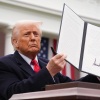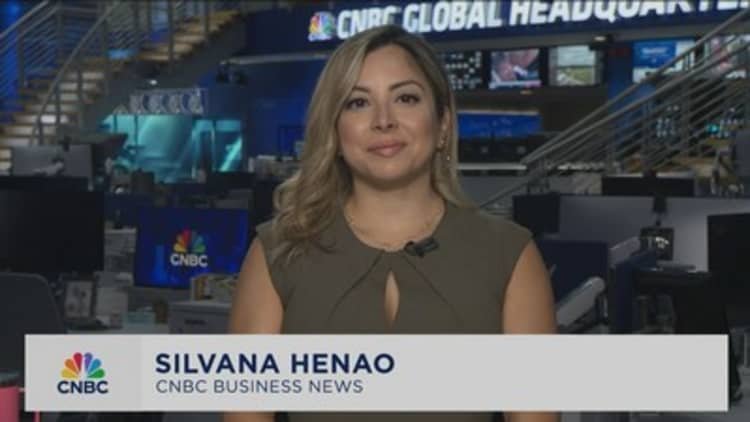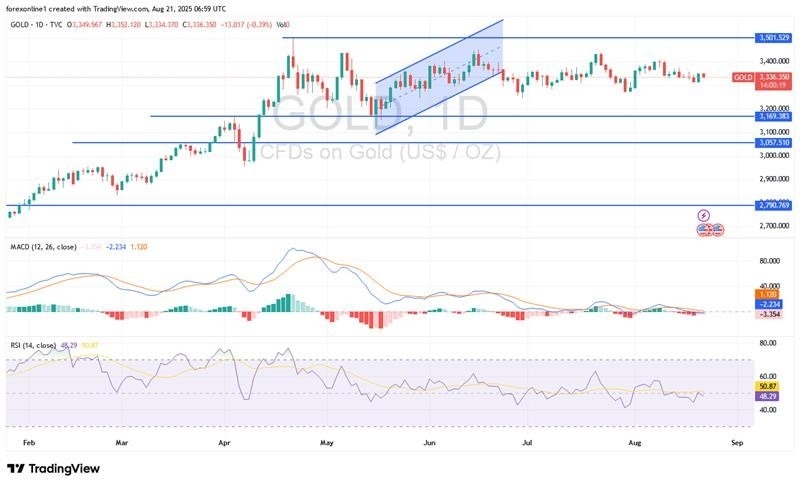
In his last Jackson Hole address as Federal Reserve chairman Friday, Jerome Powell will address the economic outlook and the Fed’s long-term balancing act between fighting inflation and unemployment. The speech comes as the central bank is under mounting pressure from the White House to lower interest rates.
Kent Nishimura/Getty Images North America
hide caption
toggle caption
Kent Nishimura/Getty Images North America
Federal Reserve Chairman Jerome Powell will speak Friday in what will be his final appearance as Fed chair at the high-profile, high-altitude meeting in Jackson Hole, Wyo.
The speech comes as the central bank is under mounting pressure from the White House to lower interest rates.
Powell will address the economic outlook, three-and-a-half weeks before the Fed’s next rate-setting meeting. He’ll also talk about the central bank’s longer-term balancing act between fighting inflation and unemployment.
The annual meeting, sponsored by the Federal Reserve Bank of Kansas City, is a chance for economists and central bankers from around the world to hike, fish and talk monetary policy in a spectacular setting at the foot of the Teton mountain range.
Hints on rate cuts
Investors will be listening for any clues Powell may offer about a possible rate cut at the next Fed policy meeting in September. But they could be disappointed.
“I wouldn’t hold my breath waiting for Jay Powell to tip his hand on whether the Fed is going to cut rates,” says Joe Brusuelas, U.S. chief economist at the accounting and consulting firm RSM.
After cutting its benchmark rate by a full percentage point last year, the Fed has held interest rates steady since December. While investors are betting the central bank will cut rates by a quarter percentage point in September, Brusuelas thinks it’ll be a close call.
“This is far closer to a coin flip than what’s being commonly acknowledged,” he says.
Inflation is still running well above the Fed’s 2% target, and many Fed policymakers are worried that President Trump’s tariffs could put more upward pressure on prices. Holding rates steady could act as an insurance policy to help keep inflation in check.
On the other hand, the labor market is displaying signs of weakening, which argues for lower rates. The latest jobs report from the Labor Department showed employers added fewer jobs in July than expected, and job gains for May and June were all but wiped out.
Fed policymakers will get another month’s reading on both inflation and jobs before they have to make a decision on interest rates, so Powell may simply say that he and his colleagues are keeping their options open.
Long-term balancing act
Powell will also use his speech to discuss the Fed’s long-term interest-rate policy, which has just undergone a five-year review.
Unlike most central banks, which focus only on fighting inflation, the Fed has two jobs: promoting stable prices and maximum employment. Sometimes, those twin goals require a balancing act, since the tool used to fight inflation — higher interest rates — can weaken the job market, while efforts to boost job growth with lower interest rates can also lead to higher prices.
After its last long-term policy review in 2020, the central bank declared it would not raise interest rates preemptively to ward off inflation just because unemployment was low. The years leading up to the pandemic had shown the benefits of a tight job market — especially for those who often struggle to find employment — and the Fed said it would be willing to tolerate slightly higher prices to keep those job gains coming.

Containers are stacked up at the Port of Southampton, in Southampton, England, on April 3, 2025. The Fed worries tariffs on imports could raise prices for U.S. consumers.
Dan Kitwood/Getty Images/Getty Images Europe
hide caption
toggle caption
Dan Kitwood/Getty Images/Getty Images Europe
But that review followed a decade of very low inflation. Policymakers are likely to adopt a different strategy after the painful price hikes of the last few years.
“We’ve now all gone through and experienced what high inflation and high prices look like,” says Sarah Binder, a senior fellow a the Brookings Institution who studies the Fed. “That’s going to change how people think.”
The Fed’s new framework is likely to emphasize the importance of maintaining stable prices, and a greater caution about allowing inflation to exceed the Fed’s two-percent target.
Fed independence under attack
Fighting inflation often requires the Fed to make unpopular decisions, like raising interest rates, so the central bank was designed to be insulated from political pressure. That independent decision-making authority is now being tested by a president who has been outspoken in demanding lower rates.
Trump has berated Powell and other Fed policymakers for not cutting rates more aggressively, saddling Powell with the derisive nickname, “Too Late.”
He’s also criticized the Fed for cost overruns on its headquarters renovation. And this week, Trump demanded the resignation of another Fed governor, Lisa Cook, after an ally of the president accused Cook of making false statements on mortgage applications.
“The central bank’s independence is under greater threat than any time during my lifetime,” Brusuelas says.
Powell’s term as Fed chairman ends next May. Trump will get to choose his successor and fill at least one other vacancy on the Fed’s governing board, after a member stepped down early this month.
While Powell has tried to avoid sparring with the president, he’s stressed the value of keeping interest-rate policy free from political pressure.
“Having an independent central bank has been an institutional arrangement that has served the public well,” Powell said last month. “And as long as it serves the public well, it should continue and be respected.”
Brusuelas agrees.
“If you no longer let the Fed set the policy rate independently, we’re not only going to have 3-4% inflation. We’re going to have much higher inflation,” Brusuelas says. “We know who’s going to bear the burden of those transition costs. It’s the middle class. It’s the working class. And the working poor.”










